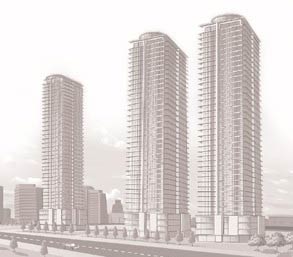The fall and rise of a Phoenix I knew

No backyard. Fivel walls shared with neighbors. One 400 square foot living space with a joined bathroom. An elevator. A parking garage. A lobby. Asking price: $1 million dollars plus everything that made Arizona charming.
I don't quite know what to say about this one.
I remember thinking two-story houses were fascinating because they were semi-rare. When I think of the 40+ urban loft projects being constructed throughout Phoenix, Arizona I find myself a bit speechless.
The design guy critiques the style of his hometown.
The architecture coming to the valley of the sun is no doubt, world class. The gourmet blends of steel and brick, stucco and stone, and rust and copper can really catch the attention of investors and urbanites who are paying three times more for the same amount of space in New York, Boston, Los Angeles, Washington D.C., Portland, Seattle, and Chicago.
I don't have a problem with the interior and exterior design aspects of the new construction. I think it's all just swell. What I want to redesign is the attitude that's coming with it.
We used to have a theme park known as "Rawhide" where visitors could watch gunfights, eat rattlesnake, pan for gold, and take horse drawn wagons deep into the desert to watch Native American Indian dances. The property that "Rawhide" was on eventually became so valuable that the owners of the park sold the land to developers. There are now just a few remnants of the park staged like museum exhibits at a casino ten miles outside of town.
I understand that things change, but it's tragic when the change is purley money driven. I remember when a local freeway was being built. Homeowners, some of whom had lived in their homes for decades, were forced to sell their houses to the city and relocate. Then, the city enacted a policy called "imminent domain" in which developers could pressure public officials to condemn the property on which one's business lie if the person did not want to sell their business. Buy condemning the property, the value of the property would decrease, pushing the business owner to sell his land cheaply to the government or the investor looking to come in. This was originally meant to be for the development of legitimate city needs, like the building of a power plant or a water treatment facility. Now, it's being done to make way for shopping centers.
A statement is made when the city planners tell you that your home or your business is no longer worthy to remain as it is. It means that the city is growing colder. The life in it is is becoming as mechanized as the automatic checkout counters at the grocery store. What used to be a ranch is now a 500-home, cookie cutter community strategically dropped next to a Safeway, a video store, and a Starbucks. Is this all a city needs? Though I can now find almost anything by driving three minutes in any direction, it is rare that I find any real community. It is only when my job leads me to 55+ communities that I find someome who knows their neighbors well enough to invite them over for dinner.
Perhaps this is because the neighborhoods are being filled by people that have moved here because of the low prices, yet plan on selling again as soon as the market is right. Phoenix is becoming like seat neighbors on an airplane; pleasant and short lived relationships come and go as people make their way to new destinations.
Now, when I look at the skyscrapers being built, I am starting to wonder what portion of Arizona was torn down in order to build that tower of steel.
There is a good reason why Phoenix was able to last as long as it did while other cities have gone this way long ago. No doubt, this is because it was harder to push people around when they had a pistol on their hip.

1 Comments:
With big cities comes big building. The mayor of Phoenix and Dr. Crow want to make us world class thinking that by adding big building it will do the job. What they don't get is that what makes Phoenix Phoenix has nothing to do with the size of the buildings or the fake urban culture it's all about the desert and the people who stay here to live in the heat. Don't worry no matter what they do we will be who we are westerns.
Post a Comment
<< Home